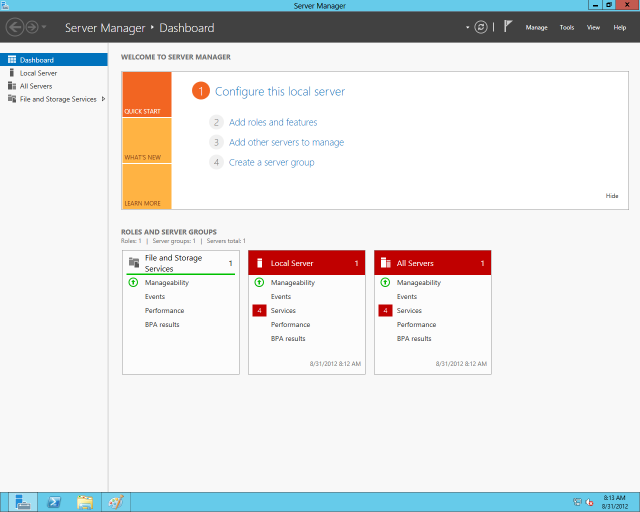
Server 2012's new Server Manager, shown here, makes management of remote and local servers and their features much simpler for neophyte Windows admins.
Sean Gallagher
Today, Microsoft officially releases Windows Server 2012, the first of its latest wave of new operating systems. It shares a few things with the upcoming Windows 8 client operating system, including the same Windows NT 6.2 kernel, and the same Metro and Desktop split-personality graphical interface—at least if you choose to install it. It also shares the same sort of cloud-centric focus as the Windows 8 client—except rather than just connecting to cloud services, Server 2012 is intended to be the building block for them.
Windows Server 2012 probably won’t have the adoption lag in the enterprise that Windows 8 is bound to face. That's because, aside from the Metro GUI, Server 2012’s biggest changes are in substance rather than style, building upon what the company delivered with Windows Server 2008 Release 2 three years ago. In particular, Server 2012 takes two management features Server 2008 R2 admins will be familiar with—Server Manager and PowerShell—and expands on them considerably.
While many of the changes in Server 2012 are incremental improvements over its predecessor, Windows Server 2008 Release 2, the new features are more than evolutionary when taken as a whole. In the same way that Microsoft has “embraced and extended” the functionality of tech competitors and nominal partners in the past (from its “coopetition” with Novell in networking to its “cutting off” of Netscape’s air supply in the Web software market), Windows 2012 and related technology make many previously advanced server and storage virtualization features into a commodity. Hyper-V alone, which we’ll cover in greater depth later this week, offers enough in the way of new features and capabilities that it could disrupt the business models of VMware and other IT companies that have profited from previous gaps in Microsoft’s capabilities.
Read 32 remaining paragraphs | Comments
DIGITAL JUICE
No comments:
Post a Comment
Thank's!